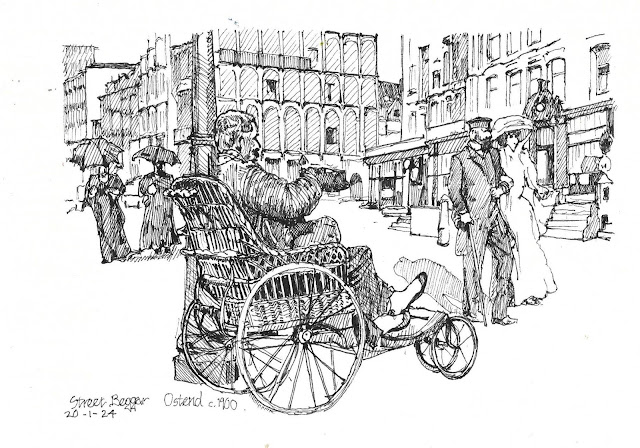Barry Island Woodhams Bros. Scrapyard c. 1980
In the 1960s British Railways decided to move to purely
diesel and electric locomotives and units. Its locomotives and tank engines
were sold to scrapyards across Britain. By the mid 70s the scrapyards had cut
up their stock – apart from one scrapyard in South Wales. Woodhams Brothers
Scrapyard in Barry Island, South Wales, made the decision to cut up a large
consignment of coal wagons first. Word got round and by the mid 70s the scrapyard
had become a mecca for steam engine enthusiasts, and in 1976 my family joined
their number when we made an excursion from London.
On a practical level there were almost 300 locomotives and tank engines in Woodhams. 213 of them were sold to various preservation societies and restored to run on heritage railways. The last left the yard in the 90s, but in its heyday in the 70s the scrapyard attracted visitors from all over the world.
Kew Gardens Pagoda
Kew, in South West London, is home to the Royal Botanical Gardens. One of it great oddities is a chinese style pagoda, which rises majestically into the skyline. During the 18th century, what became the Gardens was the site of a royal palace. It was built in 1762 by the Royal architect William Chambers, who designed several other chinese style buildings for the park, a reflection of the fad for all things oriental that we call the chinoiserie style, which later found its most extravagant expression in the Prince Regent's Royal Pavilion at Brighton.
The Old Lighthouse - Smeaton's Pier in St. Ives
Lighthouses are structures that I've always liked.
London to Brighton Veteran Car Run
Come rain or shine, on the first weekend of November owners of veteran and vintage cars gather in London and take part in the annual car rally to Brighton. The iconic shot is always of the cars going across Westminster Bridge.Street Beggar in Ostend, c. 1900
Victoria Station, LondonQueen Victoria might possibly the historical figure who has had the greatest number of cities, states, countries, towns and other places named after her. Victoria station opened in 1860, although the style of locomotives in the photograph I used for reference suggests that this is at least 20 years later.






No comments:
Post a Comment